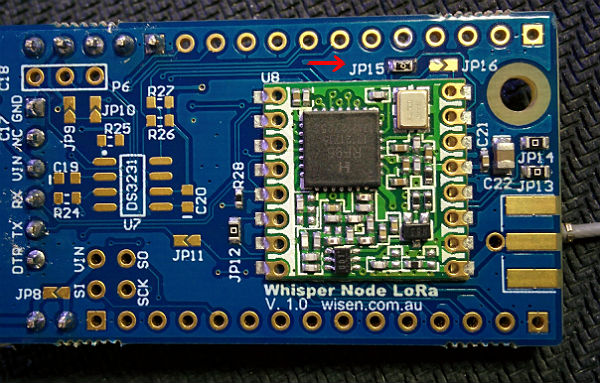Just an update on this. I’ve manage to solder the jumper (JP15) and it worked! I need to confess was my first SMD soldering work and it wasn’t difficult at all.

Whisper Node with JP15, connecting the RFM95 DIO1 to the MCU A2
Here how my pin mapping looks like now:
// Pin mapping
const lmic_pinmap lmic_pins = {
.nss = 10,
.rxtx = LMIC_UNUSED_PIN,
.rst = 7,
.dio = {2, A2, LMIC_UNUSED_PIN},
};